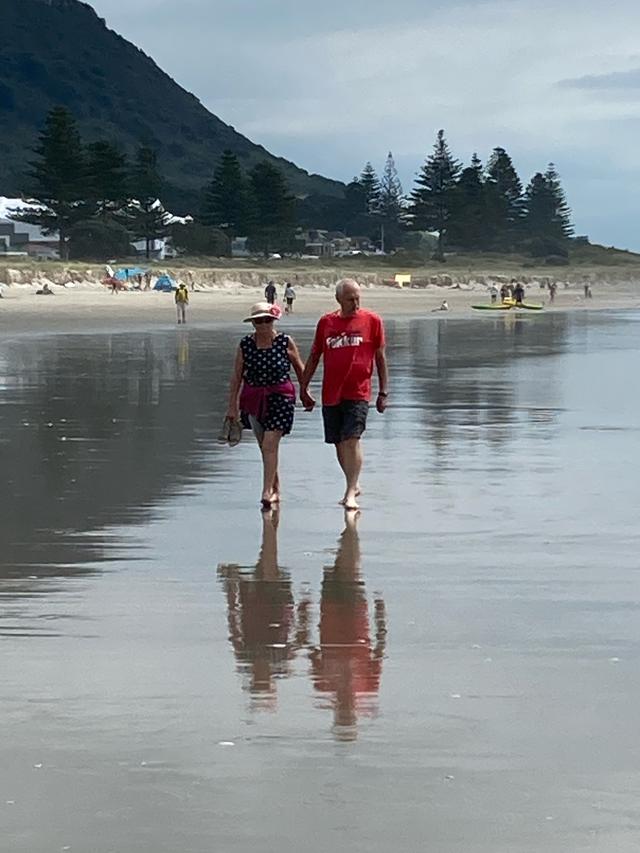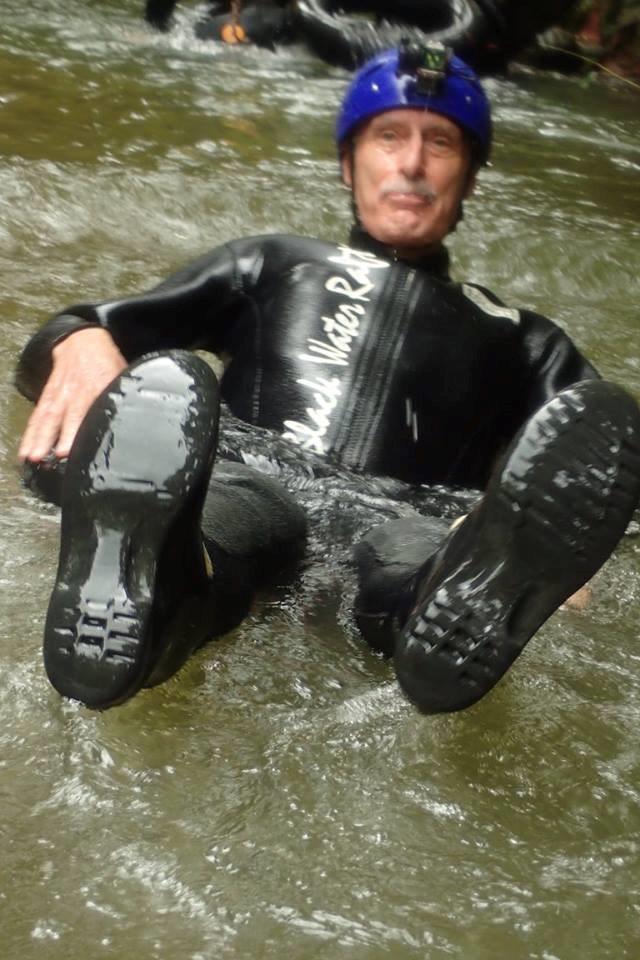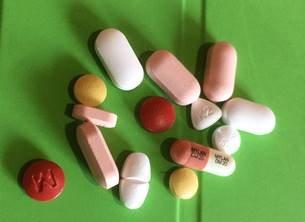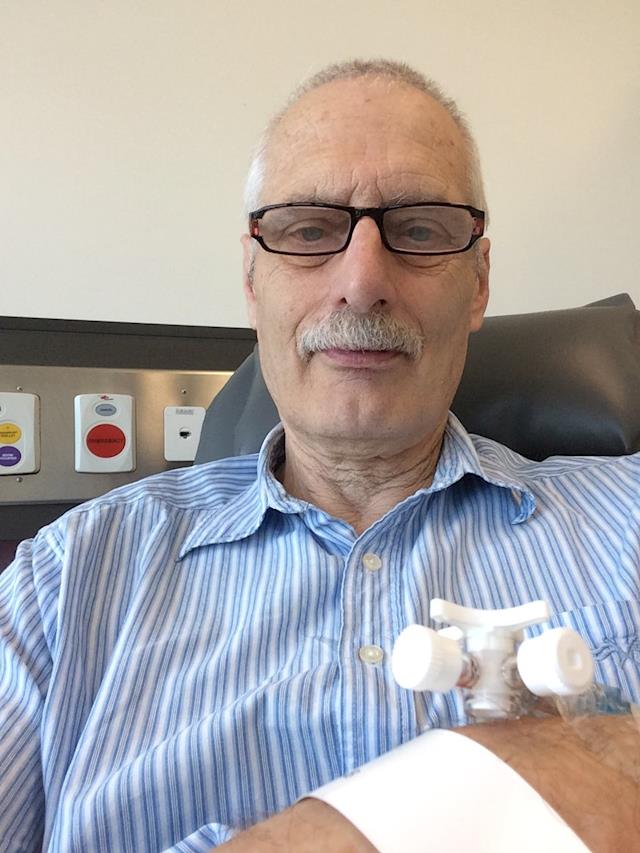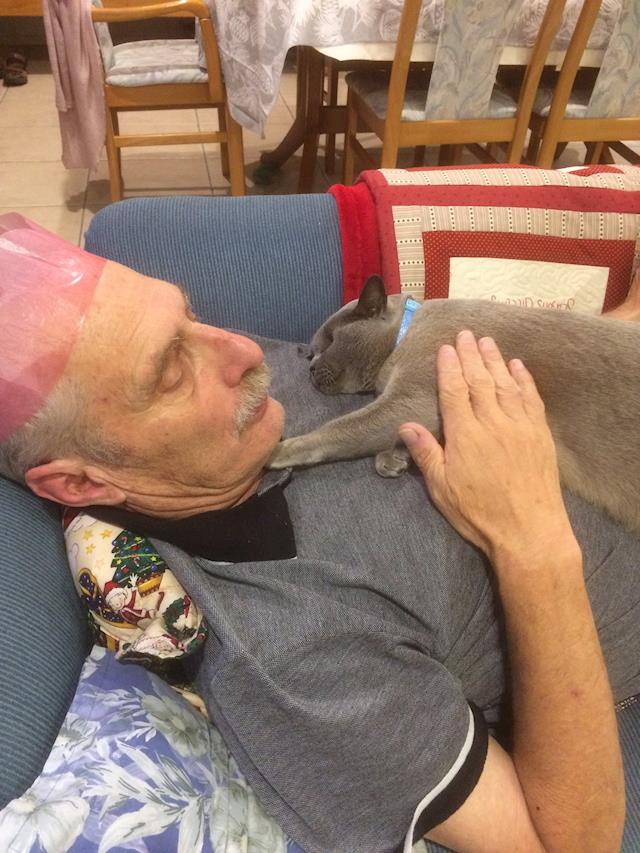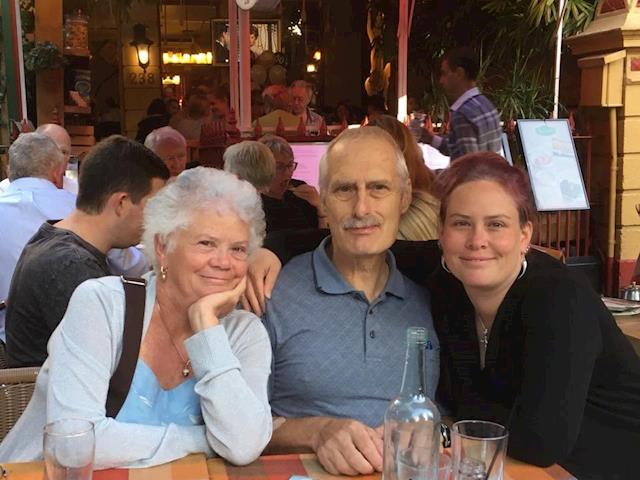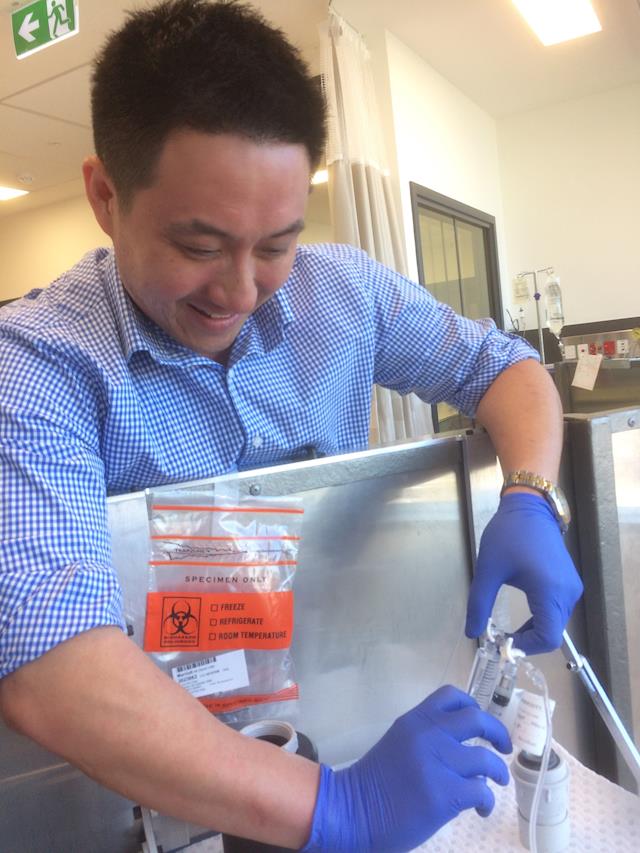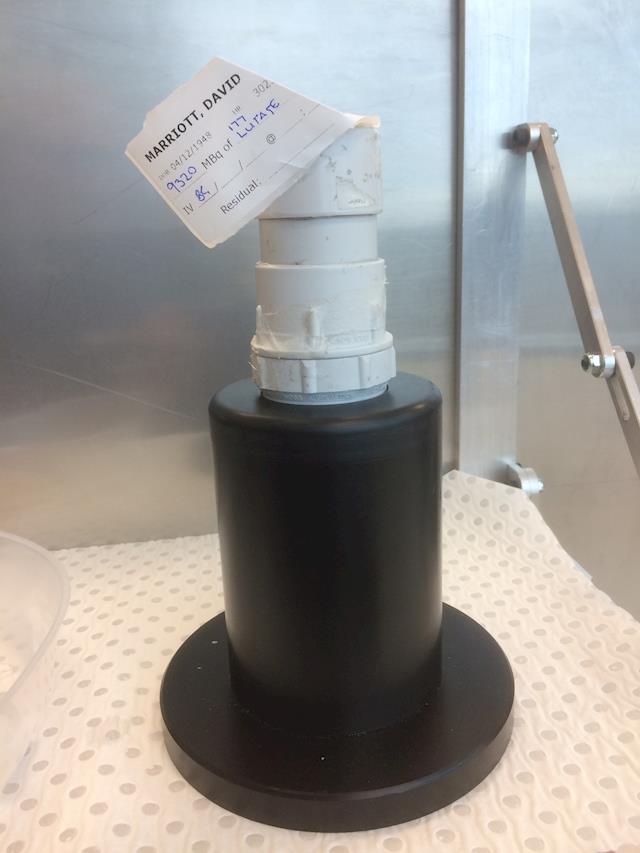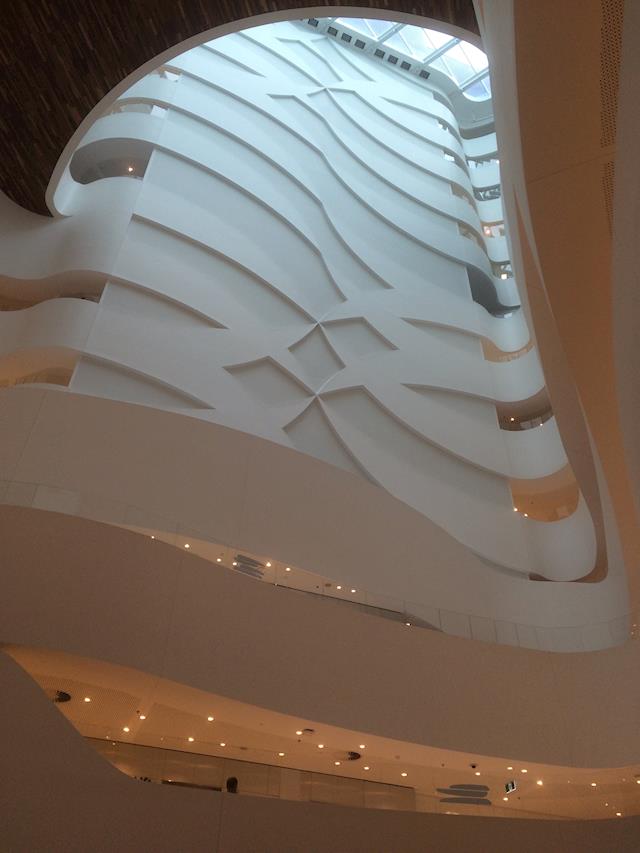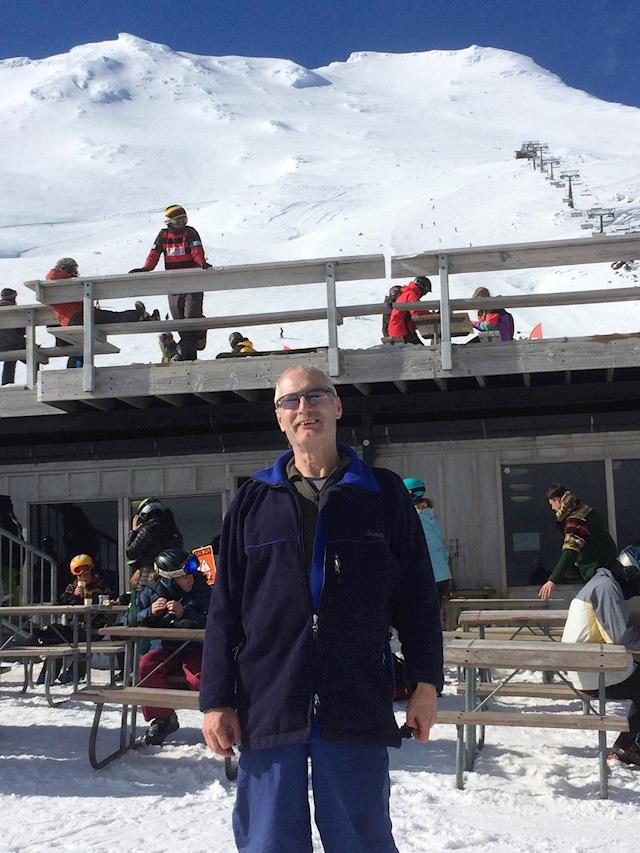Cherryl and I got back from Melbourne on Friday night following my first PRRT session. . The treatment went according to plan – very much like chemo but easier.
(Inside the Peter Mac Centre)
Monday was a consultation, consenting, and a general talk through what is planned. They gave us plenty of time, and answered any questions thoroughly, Logan (our son who is an Anaesthatist & ICU specialist In Perth) helped with asking some tricky ones, and then explained to us some of the medical stuff that we were not sure of.
Tuesday I sat in a large “lazyboy” style chair and they put a lure into your arm. They first flush through with amino acids to protect your kidneys. They then bring the radioactive isotope in a lead flask. The medicos work behind a heavy lead shield and reach over to inject the isotope into the drip system. It’s a very small quantity – only about 5ml but they feed it in very slowly over 30 minutes or so. Then they continue for another 2 hours with more amino acid. Its all very straightforward and no drama.
Wednesday I had a scan. This is a combination of a CT scan and also a gamma ray scan. This is two plates like X-ray plates which step around your body over a 30 minute period picking up a 3D profile of where the radiation has found a home – hopefully in the target cancer. This is followed by another consultation to review the scans. Following the scan, there was a second consultation to review the effectiveness of the treatment.
In my case the radiation is totally concentrated within the cancer and with no traces anywhere else in the body. This is an amazing targeted therapy and I am now waiting for the radiation fairies to do their stuff.
Logan joined us in Melbourne and took us on a guided tour around the city centre. He is Mr superfit and I don’t think he realised that us old crocks were struggling to keep up. We did 16-18 km each day we were there. Melbourne is a beautiful city. I’ve been there many times on business but have only previously seen the airport, taxis, office and back to the airport again. Melbourne has some amazing architecture, both old and new. I got the impression that there must be town planning rules which means that a developer is not allowed to just put up a box, and every building is dramatic in colour and style. I was particularly impressed with the “old shot tower” at central station. This is a previous century building where they poured lead down a tower to make lead shot for munitions. The old tower has now been completely surrounded by a shopping plaza with a conical glass dome – a building within a building.
The central city area is serviced by a tramway system which is free. This means that everyone uses the trams, and the streets are not congested with traffic.
We stayed in the City Edge Apartments in Elizabeth Street, simple no frills, the price was right. It was in the central city, on the tram route so only 2 stops and a short walk to Peter Mac. It had a Metro food shop across the road, Wi-Fi and a little kitchen, we ate out for cheap for dinner and being so central was easy. When we arrived and left we used the Sky-Bus from the airport and they had a free shuttle bus to our accommodation, so very cheap to travel. We are trying to keep the costs down as much as we can.
I started to feel tired by Thursday afternoon, and then on the way home had a stinging pain at the site of the cancer. So far largely free of any debilitating side effects. Saturday I had sweating, shivering and trembles, and feverish. Sunday morning slightly less, and by afternoon feeling much better, just a hungover feeling.
Next trip in early November has been booked. We are a little concerned when they told us they expect to do 4 rounds and then perhaps a review in 6 months and another round. We have been fundraising, and I want to thanks all those people who have been so kind and donated. We really appreciate this help. Without the kindness and donations of all of you, we would not be able to take up this treatment.
The kindness and help takes many acts, when we got home our cat had been collected from the cattery and fed and sorted at home, house warmed up and a soup for supper on the bench. We were dropped off and collected from the airport by another friend. Our house, mail etc was sorted while we were away, and a roast pork dinner was delivered on Saturday for us from another friend.
Cherryl really appreciated this as she was on the go the whole time we were away, and has been wife, nurse, carer support person through the whole process. She is glad to be home to let her feet heal from all the walking!
